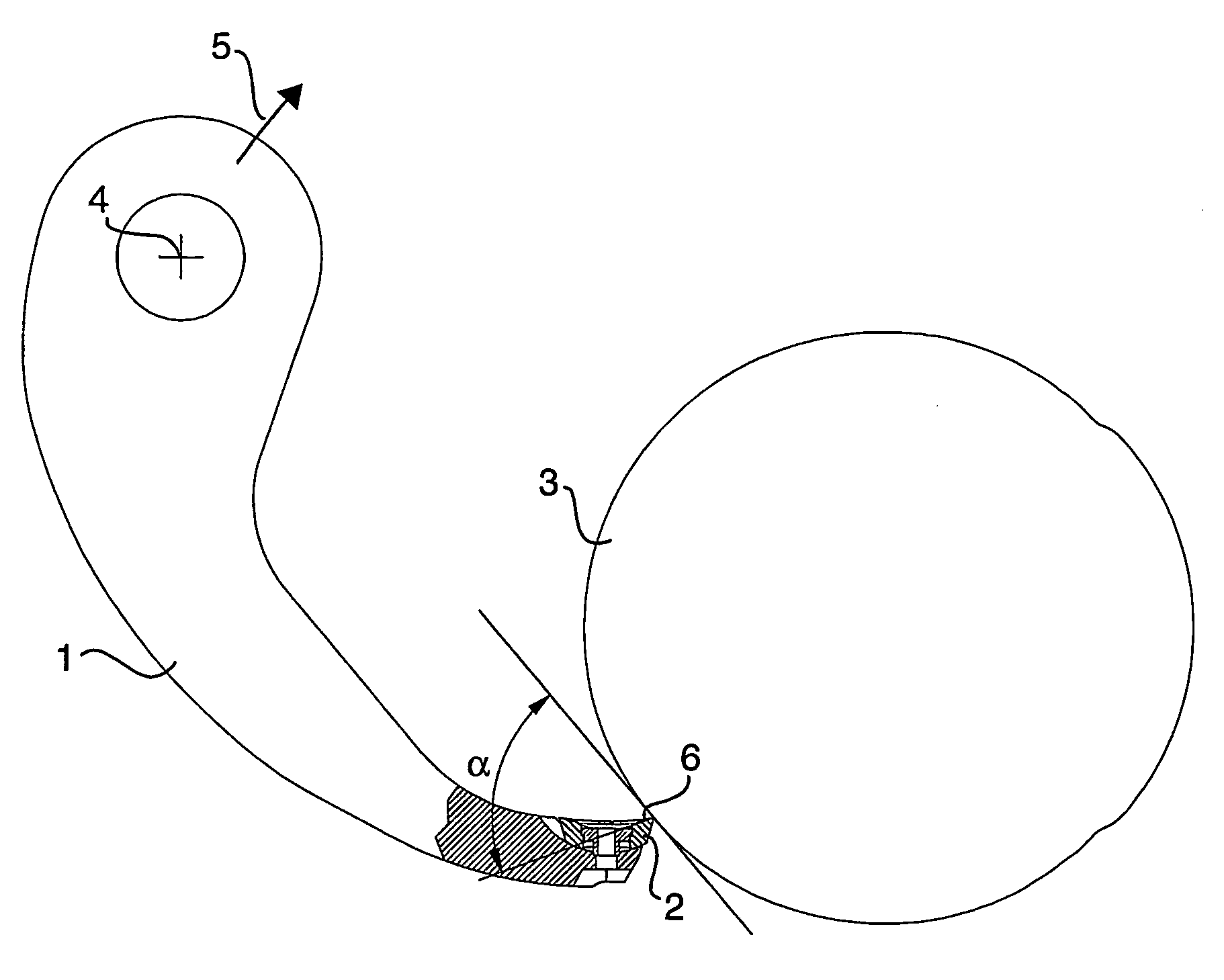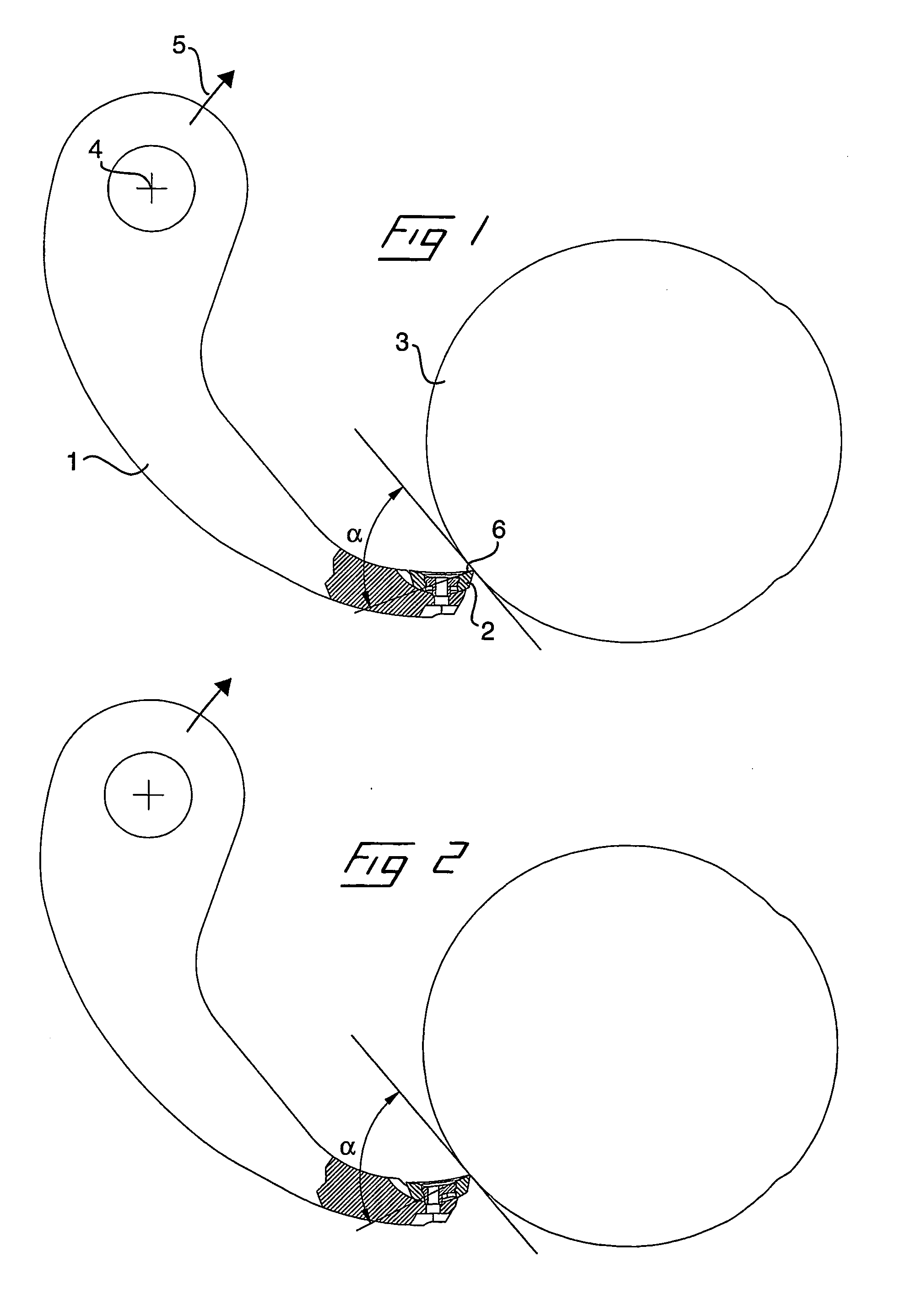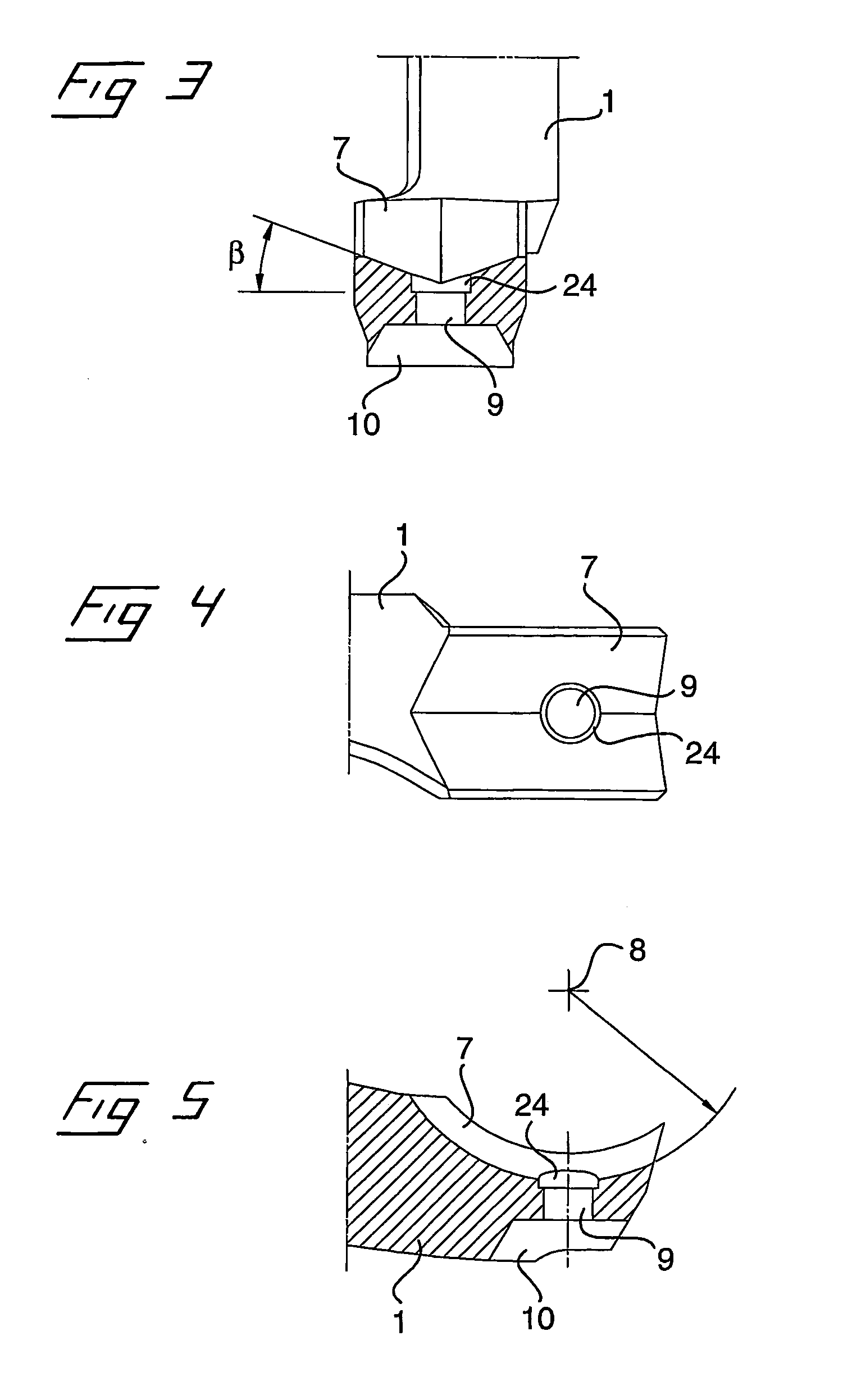Barking Device and Barking Tool
a barking device and tool technology, applied in the direction of turning tools, turning tools, tree debarking, etc., can solve the problems of time-consuming and labor-intensive to completely exchange barking tools, problems and drawbacks, and may have to change the contact angle of barking tools, so as to facilitate design and prevent rotation and displacement.
- Summary
- Abstract
- Description
- Claims
- Application Information
AI Technical Summary
Benefits of technology
Problems solved by technology
Method used
Image
Examples
Embodiment Construction
[0048] In the present description, the terms transversely, cross-section etc, relate to a direction transversely to the longitudinal extent of the barking arm, parallel to the direction of feeding of the logs. The terms in the longitudinal direction, longitudinal section etc. relate to a direction in the longitudinal extent of the barking arm, perpendicular to the direction of feeding of the logs. By front end of the barking arm is meant the outer free end of the barking arm including the tool seat for the barking tool, which is adapted to be applied against the circumferential surface of a log which is to barked.
[0049] Reference is first made to FIGS. 1 and 2, which schematically show a barking device comprising a barking arm 1 and a barking tool 2 during barking of a log 3. The barking arm is, by means of a pivot joint, with its centre of turning at the point 4, pivotally connected at its inner end to a rotatable, annular rotor (not shown), which is adapted to rotate in the direc...
PUM
 Login to View More
Login to View More Abstract
Description
Claims
Application Information
 Login to View More
Login to View More - R&D
- Intellectual Property
- Life Sciences
- Materials
- Tech Scout
- Unparalleled Data Quality
- Higher Quality Content
- 60% Fewer Hallucinations
Browse by: Latest US Patents, China's latest patents, Technical Efficacy Thesaurus, Application Domain, Technology Topic, Popular Technical Reports.
© 2025 PatSnap. All rights reserved.Legal|Privacy policy|Modern Slavery Act Transparency Statement|Sitemap|About US| Contact US: help@patsnap.com



